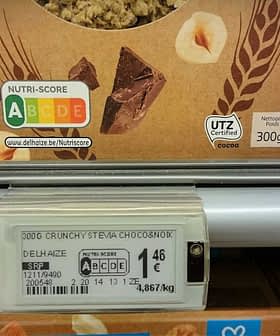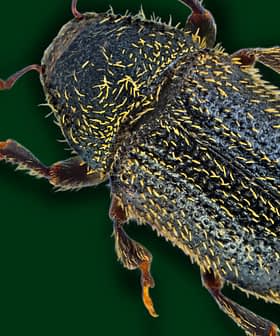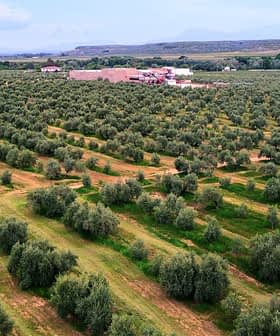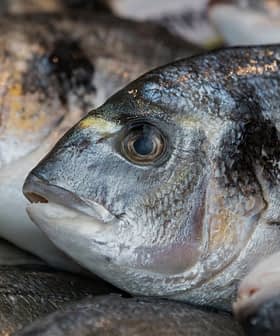Brussels Considers Changing Stance on Glyphosate and Cancer

The European Commission may instruct research agencies to review the scientific research into glyphosate, a commonly used herbicide in agriculture, to potentially change the current stance on its safety. Recent research has shown an increase in tumors and leukemia in rats exposed to glyphosate, contradicting previous conclusions on its safety by regulatory bodies.
The European Commission may instruct research agencies to review the scientific research into glyphosate, one of the most commonly used herbicides in agriculture.
“We are waiting to shortly confirm a mandate from the European Commission for the European Food Safety Authority (EFSA) and the European Chemicals Agency (ECHA) to assess the study,” a commission spokesperson told Olive Oil Times.
“Once we receive all the raw data and information needed to assess the study properly, we will evaluate whether the findings reported in the study would impact the conclusions that we and the European Chemicals Agency reached in our latest assessments of the safety of glyphosate in 2023,” the commission explained.
See Also:Botanical Pesticide Outperforms Synthetic Alternative in Killing Olive Bark BeetleFollowing the review, the current EFSA stance on glyphosate may change, a decision that will inform the EU’s regulatory activity regarding the popular herbicide.
A new investigation into the potential health risks associated with glyphosate has emerged from a recent paper on long-term exposure, published by Environmental Health.
The paper, authored by a team of international researchers and several scientists from the Italian Ramazzini Institute, provides new evidence of the carcinogenic potential of glyphosate and glyphosate-based herbicides, such as Roundup Bioflow and RangerPro.
Herbicides are often used in olive farming to control weeds growing under the trees, thereby reducing competition for water and nutrients.
Many olive growers appreciate how its use can simplify field management, lower labor costs and avoid mechanical weeding.
The recent research is part of the Global Glyphosate Study, a multi-institutional project designed to thoroughly assess the toxicity of the compound, from prenatal life through old age.
According to the research, scientists administered glyphosate and two commercial herbicides to Sprague – Dawley rats for two years, starting on the sixth day of gestation.
Commonly used in biomedical research, Sprague – Dawley rats are known for their calm temperament and genetic diversity. Due to these traits, they are widely used in long-term toxicology and cancer studies.
Their predictable growth and health profiles make them a trusted model for evaluating potential health risks in humans.
The research tested doses including the European Union’s acceptable daily intake.
The results show a statistically significant increase in both benign and malignant tumors in multiple organs, including skin, liver, thyroid, nervous system, kidneys, spleen and pancreas.
The research also highlighted the increase in leukemia cases, many of which led to early deaths (less than one year of age), a finding considered extremely rare in this species.
According to the researchers, their findings strengthen those announced in 2015 by the International Agency for Research on Cancer (IARC), which classified glyphosate as “probably carcinogenic to humans.”
The researchers also noted that their results are consistent with epidemiological evidence on the health effects of glyphosate-based herbicides.
The European Commission spokesperson recalled that during the peer review of glyphosate’s safety in 2023, all information made available by the latest scientific research was taken into consideration.
The spokesperson also explained that EFSA and ECHA would need to review the raw data to reach a correct assessment.
“It’s important we apply the same standard of scientific scrutiny to studies carried out by researchers as we would to studies we receive from industry,” the spokesperson said.
The commission also confirmed that it has already requested raw data about the ongoing research from the Ramazzini Institute in the past few years.
“Unfortunately, we did not receive them,” the spokesperson said. “The raw data are important to allow us to verify the methodology used, the composition of test material and the results of a study.”
“In this case, reviewing the raw data would be especially relevant as the findings appear to contradict the main body of evidence and the conclusions reached by EFSA, ECHA and many other regulatory bodies around the world on the safety of glyphosate,” the spokesperson added.
For years, glyphosate has been at the center of a heated global debate about its safety.
Specific forms of the substance were blocked by courts in France in 2019.
In other cases, environmental organizations have protested against the lack of government action on glyphosate, including in Spain when a high concentration of the herbicide was found in the waters of Mar Menor, a coastal lagoon in the southeastern autonomous community of Murcia.
Several studies also sparked public concern, one of which provided evidence that following a non-organic Mediterranean diet can expose consumers to pesticides and herbicides, namely glyphosate.
Olive Oil Times contacted the authors involved in the Environmental Health study, but they were unavailable for comment.







